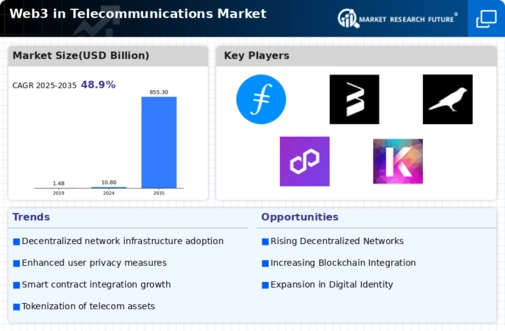Market Share
Web3 in Telecommunications Market Share Analysis
Web3 technologies have changed the landscape for e-commerce and retail industries through various market trends that reflect changes in business operations and customer relations. One significant change has been observed with decentralized markets becoming popular nowadays. NFT integration is an example of such market trends in e-commerce and retail-driven by web3 technology. These digital asset, which come in different forms like text files, paintings as well as computer code, are kept on blockchains to establish their authenticity.NFTs have allowed companies to produce exclusive goods using a one-of-a-kind tokenization system. The main idea here is to create scarcity, thus generating demand among consumers through limited-edition items. Web3 is also influencing the evolution of customer loyalty programs. Nonetheless, modern digital marketing campaigns rely on centralized databases, whereas decentralized loyalty programs built on blockchain technology offer a transparent and tamper-proof system for tracking customer engagement. This helps in creating more personalized and rewarding loyalty initiatives where customers earn and redeem points across a network of participating retailers to foster a seamlessly interconnected ecosystem. Decentralized finance (DeFi) is emerging as a significant trend affecting the e-commerce and retail sectors. DeFi platforms based on blockchain technology are designed to provide financial services without traditional intermediaries that enable users to borrow, lend, or trade assets in a decentralized way. By doing this, the new trend has the potential to revamp payment systems used in e-commerce, offering users more flexibility and options while reducing their dependence on traditional banking infrastructure. In addition, shifts towards Web3 have an impact on how brands interact with their communities. Social tokens have become popular among brands as these can be used to incentivize user engagement or even build brand communities. Consequently, these tokens enable companies not only to reward customers who have chosen them but also give members exclusive access to certain events or contents, thus generating that sense of community ownership.








Leave a Comment